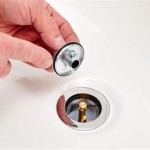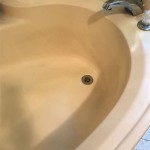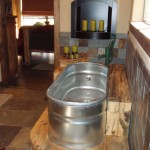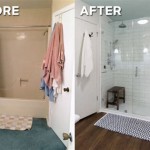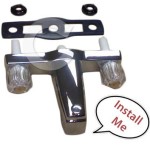Free Standing Bathtub Width: A Comprehensive Guide
The free standing bathtub has become a prominent fixture in modern bathroom design, offering a combination of aesthetic appeal and functional luxury. When planning a bathroom renovation or new construction, determining the appropriate width of a free standing bathtub is crucial. The width, alongside length and height, influences not only the visual impact of the tub but also the comfort it provides and the practicality of its placement within the available space.
Several factors should be considered when selecting the width of a free standing bathtub. These include the overall bathroom dimensions, the bather's size and personal preferences, the desired style of the tub, and any applicable building codes or accessibility standards. A well-informed decision will ensure a harmonious and enjoyable bathing experience.
Understanding Standard Free Standing Bathtub Widths
While free standing bathtubs are available in a variety of widths, certain dimensions are considered standard and are more commonly found in the market. Understanding these standard widths serves as a good starting point for determining the appropriate size for a particular bathroom and user.
Typically, free standing bathtubs range in width from approximately 27 inches to 36 inches. Bathtubs at the narrower end of this spectrum, around 27 to 30 inches, are often chosen for smaller bathrooms or guest bathrooms where space is limited. These narrower tubs can still provide a comfortable bathing experience, especially for individuals of average build, while minimizing the footprint within the room.
Mid-range widths, between 30 and 33 inches, represent a popular choice for many homeowners. They offer a balanced combination of comfort and space efficiency, accommodating a wide range of body types without overwhelming the bathroom layout. This width range is suitable for master bathrooms and larger secondary bathrooms.
Wider models, ranging from 33 to 36 inches or more, are designed for luxurious bathing experiences and are often found in larger bathrooms. These wider tubs provide ample space for soaking and relaxing, allowing bathers to fully stretch out and enjoy the water. They are particularly well-suited for taller or larger individuals who require more room to move comfortably.
It's important to note that these are general guidelines and the actual measurements can vary slightly depending on the specific manufacturer and the design of the bathtub. Always consult the product specifications provided by the manufacturer to obtain precise dimensions before making a purchase.
Factors Influencing Free Standing Bathtub Width Selection
The optimal width of a free standing bathtub is not solely determined by standard measurements. A number of factors play a critical role in ensuring the selected width is both functional and aesthetically pleasing within the context of the specific bathroom and the needs of the user.
Bathroom Size and Layout: The dimensions of the bathroom are paramount. A bathtub that is too wide can overwhelm a small bathroom, making it feel cramped and uncomfortable. Conversely, a bathtub that is too narrow can appear insignificant in a large bathroom, failing to make the desired visual impact. The bathroom layout should be carefully considered, taking into account the placement of other fixtures, such as the toilet, vanity, and shower. Adequate clearance should be provided around the bathtub to allow for comfortable movement and access for cleaning and maintenance. Building codes may also dictate minimum clearances around bathroom fixtures, which should be adhered to.
Bather's Size and Preferences: The intended users of the bathtub should be considered when determining the appropriate width. A wider bathtub is generally more comfortable for larger individuals, providing ample space to stretch out and relax. Taller individuals may also benefit from a wider tub, as it allows them to recline without feeling constricted. Personal preferences also play a role. Some bathers prefer a more snug and intimate bathing experience, while others prefer a more spacious and luxurious feel. It is often recommended to physically test out different bathtub widths, if possible, to determine which one provides the most comfortable and enjoyable experience.
Bathtub Style and Design: The style of the bathtub itself can influence the perceived width and the overall aesthetic of the bathroom. Slipper tubs, for example, often have a narrower width compared to double-ended tubs. A more modern and minimalist design may lend itself to a narrower width, while a more traditional or ornate design may benefit from a wider stance. The shape of the bathtub also affects the usable bathing space. An oval or rectangular tub may offer more interior space than a more stylized or asymmetrical design, even if the overall width is similar. Consider the overall design aesthetic of the bathroom and choose a bathtub style and width that complements the existing elements.
Accessibility Considerations: For individuals with mobility limitations, the width of the bathtub can significantly impact accessibility. A wider bathtub may provide more room for maneuvering and transferring in and out of the tub. However, a bathtub that is too wide may be difficult to reach across for individuals with limited reach. The height of the bathtub should also be considered alongside the width, as a lower tub may be easier to enter and exit. Grab bars and other accessibility aids can be installed to further enhance safety and ease of use. Compliance with accessibility standards, such as the Americans with Disabilities Act (ADA), may be required in certain residential and commercial settings.
Measuring for a Free Standing Bathtub
Accurate measurement is essential before purchasing a free standing bathtub. This ensures that the selected tub fits comfortably within the designated space and meets all design and accessibility requirements. The following steps outline a comprehensive approach to measuring for a free standing bathtub.
Measure the Available Space: Begin by measuring the length and width of the area where the bathtub will be placed. Account for any existing fixtures, such as the toilet, vanity, and shower, and ensure that there is sufficient clearance around each fixture. Note any obstructions, such as pipes, windows, or door frames, that may affect the placement of the bathtub. Consider the location of the drain and water supply lines, as these will need to be connected to the bathtub. It is often helpful to create a floor plan of the bathroom, showing the dimensions and the placement of all fixtures. This will provide a visual representation of the space and help identify any potential issues.
Determine Desired Tub Dimensions: Based on the measurements of the available space and the aforementioned factors, determine the desired length, width, and height of the bathtub. Consider the interior dimensions of the tub, as this will affect the actual bathing space. Allow for sufficient clearance around the bathtub for comfortable movement and access for cleaning and maintenance. As a general rule, aim for at least 24 inches of clearance on all sides of the bathtub. Consult with a bathroom designer or contractor for guidance on determining the optimal dimensions for the bathtub.
Check Manufacturer Specifications: Once the desired dimensions have been determined, consult the product specifications provided by the manufacturer of the bathtubs being considered. Pay close attention to the overall dimensions of the tub, including the length, width, height, and depth. Verify that the dimensions meet the requirements of the available space and the bather's needs. Also, check the weight of the bathtub, both empty and full of water, to ensure that the floor can support the weight. Compare the specifications of different tubs to find the one that best fits the criteria.
Account for Plumbing Considerations: Free standing bathtubs typically require a floor-mounted faucet and drain assembly. Ensure that the plumbing lines are properly positioned to connect to the bathtub. Consider the location of the drain and water supply lines and determine whether any modifications are needed. It is often recommended to consult with a plumber to ensure that the plumbing is properly installed and meets all applicable codes. Factor in the space required for the plumbing connections when measuring the available space for the bathtub.
By following these steps, homeowners can accurately measure for a free standing bathtub and ensure a successful installation. Attention to detail and careful planning are essential for achieving a functional and aesthetically pleasing bathroom design.

Freestanding Bathtub Dimensions A Sizing Guide With Faqs

Duravit No 1 Freestanding Bathtub Saniterica

Alvana 67 Deep Soaking Bathtub Solid Surface Freestanding

Getpro 55 In X 27 5 Acrylic Free Standing Flat Bottom Bathtub Soaking With Center Drain Freestanding White Gp 325 55w The Home Depot

67 In X 29 5 Oval Free Standing Tub Freestanding Soaking Bathtub With Removable Drain Alone Soaker Tubs White

Mokleba 59 Oval Solid Surface Freestanding Soaking Tub Brown

How To Choose A Freestanding Tub Guide

Vanity Art Bathtub 59 Free Standing Center Drain Slotted Overflow Acrylic White Va6610 S New Io

55 Acrylic Free Standing Tub Classic Oval Shape Soaking With Chrome Pop Up Drain Anti Clogging Adjustable Freestanding Bathtub Integrated

Floriello Acrylic Freestanding Soaking Bathtub 51
Related Posts

